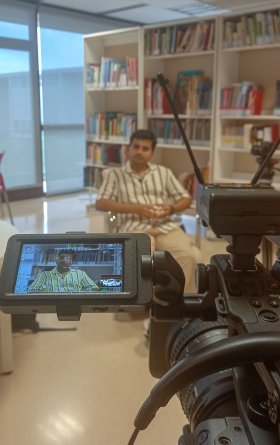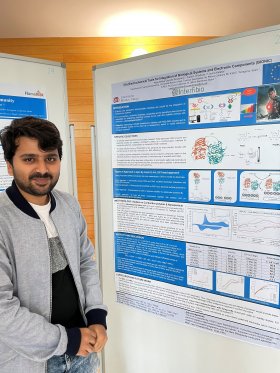Naga Adithya Chandra Pandurangi


PhD Programme: Nanoscience, Materials and Chemical Engineering
Research group: INTERFIBIO – Grup de recerca de la Interficie físico/biològica
Supervisor: Ioanis Katakis
Bio
Naga holds a bachelor's degree in Materials and Metallurgical Engineering from Jawaharlal Nehru Technological University, Hyderabad, India in 2014. Clearing the competitive Graduate exam (GATE) in India the same year, he joined a master's in Metallurgical Engineering at Indian Institute of Technology (IIT-BHU), Varanasi. As master thesis project he worked on developing bulk nanomaterial through sever plastic deformation (SPD) and quick recrystallization by a new stress relieving method called "Electropulsing" in low carbon steel and completed masters in 2016. He worked as Senior Engineer in Mahindra-Sanyo Special Steels, a multi-national company in New Product Development section for 3 years till 2019. In his tenure, he has worked on an industry-academia project, "Development of Bainitic bulk Nano-structured material". He also worked on development of high temperature capable static seals technology for gas turbine applications as Research Fellow at Indian Institute of Technology Bombay (IITB), India for 6 months. Driven to excel in the field of Nanotechnology he chose to pursue another Masters in Nanoscience, Materials and Processes at URV in 2019. Gaining knowledge on subjects like Nanoscience, Nanobiotechnology and Advanced Characterization techniques, and fascinated by the idea of using nanomaterial-based biosensors for health monitoring, did his master thesis project on establishing an electrochemical contact between PQQ-GDH enzyme and electrode by establishing an efficient matrix capable of direct electron transfer (DET) by creating a composite of conductive polymers and carbon nano-onions (CNO). The resultant system can be used in bioelectronic devices (e.g. biosensors and biofuel cells).
Project: (Bio)Electrochemical Tools for Integration of Biological Systems and Electronic Components (BIONIC)
The main purpose of the project can be divided into two parts: 1)To develop effective interface for an enzymatic electrode which is capable of direct electron transfer using conductive polymer and nanomaterial conjugation. This configuration will be realized on the gold surface by low cost electropolymerisation. Different polymers and their compatibility with PQQ-GDH electrodes will be studied. The high selectivity of electropolymerisation enables to miniaturize the configuration to micro metric patterned at no additional processing cost. 2) To develop effective immobilization and communication with living cells on electrode surface especially eukaryotic cells. An attempt will be made for the immobilization of living cells on electrodes by developing conductive interfaces to establish communication through and by means of electrochemical processes. The presence of different chemicals/ toxins will be analyzed on the surface of 'living-electrodes'. Thus, both type of electrodes (enzymatic and living-electrodes) and different combinations of them will be closely immobilized on micro-metric patterned electrodes which mimics a microenvironment of human internal organs and analyzed electrochemically in presence of different analytes.
Awards & Prizes
- Award in the "Oral presentations” category, of the 18th Doctoral Day of the Doctoral Programme in Nanoscience, Materials and Chemical Engineering.
Outreach activities
- European Researchers' Night 2023: "H2O Heroes: Kids' Demonstration on Water Conservation, Pollution, and Treatment".



